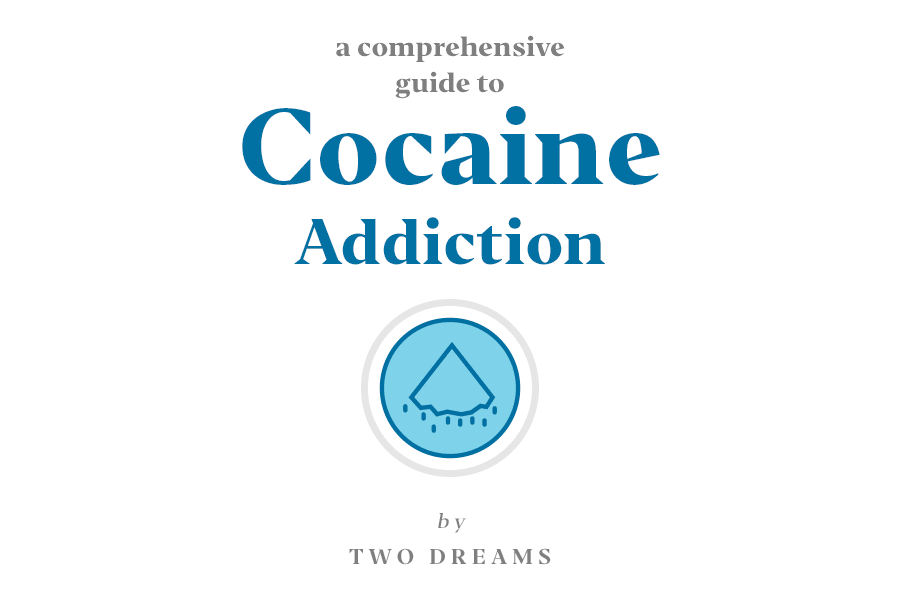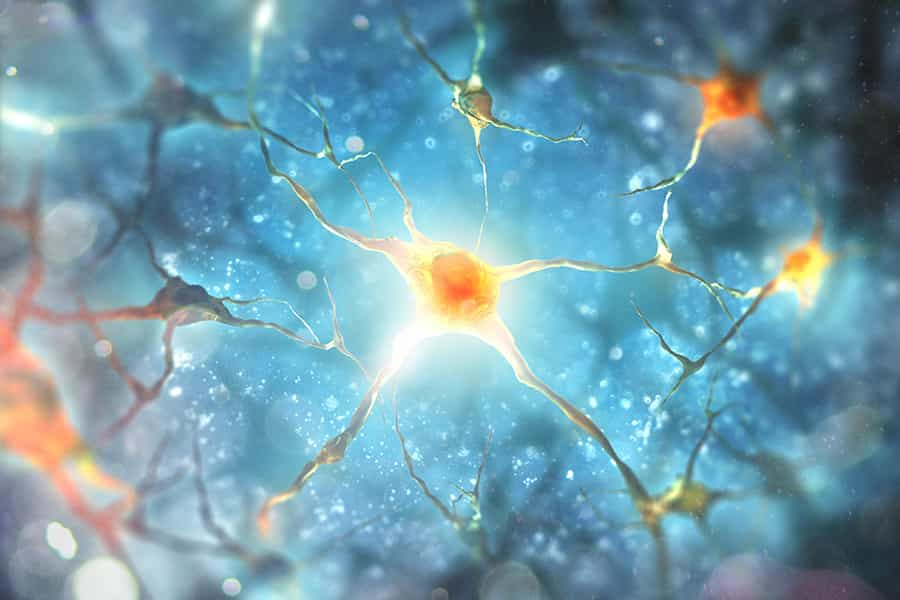
Need help with cocaine addiction for yourself or a loved one?
We provide the most advanced treatment in the industry. Contact us to learn more.
Signs, Symptoms, and Effects of Cocaine Addiction
What does cocaine do to the body?
Cocaine is an illegal, addictive stimulant made from coca plant leaves. It is most commonly sold as a fine, white powder and popular nicknames include: blow, coke, crack, rock, and snow.
Users typically snort the powder or rub it on their gums, but they may also inject it or smoke it in freebase crystal form. Cocaine causes a feel-good chemical called “dopamine” to flood into the brain, disrupting normal nerve cell function and causing a high.
What causes cocaine addiction?
Addictive drugs directly activate the brain’s reward pathway, a system involved in behavior reinforcement and memory production.
Activation of the reward system can be so intense that normal activities, like eating and sleeping, may be forgotten and/or neglected. Drugs of abuse characteristically enhance dopamine signaling in an area of the reward pathway called the nucleus accumbens (NA.) The NA is sometimes called the “pleasure center” of the brain. It releases dopamine when the brain senses a rewarding stimulus, such as cocaine, and this rush of chemicals reinforces the behavior that caused the sensation, for example smoking. Thus, the cycle of pleasure seeking begins and an addiction is cultivated.

Cocaine and similar stimulants either prompt certain brain cells to release more dopamine into the NA, or block dopamine from being cleared out of the NA so the chemical continues to hang around causing euphoria. Many drugs, including amphetamines, cocaine, morphine, and alcohol, create long-term changes in the NA. These changes affect the way the NA responds to another chemical called glutamate. This disturbance contributes to drug cravings by causing the user to remember past drug use vividly.
What are the signs and symptoms of cocaine abuse and addiction?
Effects vary from person to person and can sometimes lead to bizarre, unpredictable, and even violent behavior. The following effects may occur immediately and last anywhere between a few minutes and an hour:
Physical Signs and Symptoms of cocaine abuse
- Constricted blood vessels
- Dilated pupils
- Hypersensitivity to light, touch, and/or sound
- Nausea
- High body temperature
- High blood pressure/fast heart rate
- Euphoric happiness
- Muscle twitches/tremors
- Seizures
- Overdose and/or death
Mental Signs and Symptoms of cocaine abuse
- Extreme excitability
- Irritability/restlessness
- Alertness
- High energy
- Paranoia
What are the effects of cocaine abuse and addiction?
Potential long-term effects may include
- Nosebleeds
- Bowel decay
- Malnourishment
- Diminished sense of smell
- Difficulty swallowing
- Movement disorders (ex. Parkinson’s disease)
- HIV, Hepatitis C, other bloodborne diseases
Can anyone become addicted to cocaine?
Yes, cocaine is a highly addictive substance that has the ability to affect everyone.
Addiction is not caused by a single factor, but rather a multitude of factors. It is considered to be hereditary, in the sense that people who have a first-degree relative with an addiction are more likely to develop an addiction than those who don’t. However, many addicts have no family history of addiction, so the role of genetics alone is inconclusive. Environmental factors play a significant role, and those exposed to family and friends using cocaine on a regular basis are more likely to try it than those individuals who would have to go out of their way to gain access to it. Peer pressure, low socioeconomic status, and lack of parental guidance are also contributing factors to cocaine addiction.
Cocaine Withdrawal
What are the causes of cocaine withdrawal?
Withdrawal refers to both the physical and emotional consequences of either suddenly ceasing to take or drastically reducing intake of the drug after dependence on the substance is established. The brain and body become accustomed to functioning under certain conditions with cocaine, so forcing them to quickly adapt to new ones can cause a wide array of issues.

Signs of cocaine withdrawal
Physical and mental signs of cocaine withdrawal
- Agitation
- Restlessness
- Depression
- General malaise
- Fatigue
- Increased appetite
- Vivid nightmares
- Slowed activity
- Cravings
- Suicidal ideation
What happens during cocaine withdrawal?
The effects of cocaine withdrawal vary from person to person. Withdrawal symptoms typically occur within 90 minutes of use because of cocaine’s short half-life. Cocaine binges are typically followed by a “crash” and intense cravings, followed by physical withdrawal symptoms. Psychological cravings can last for months after cessation.
How does Two Dreams handle cocaine detox?
We do not personally offer detoxification services, however our professional staff is more than happy to refer patients to nearby clinics for detox before admission into our program.
Cocaine Overdose
Cocaine Overdose: The Risks and Effects
Ingesting a large amount of cocaine, either intentionally or accidentally, can lead to serious consequences. This guide is for information purposes only and should not be used in case of an emergency.
If you suspect you or someone else has overdosed, call your local emergency hotline (ex. 911) or a poison control center (1-800-222-1222) immediately.
Signs of cocaine overdose
- Tremors, shakiness
- Seizures
- Long-term wakefulness
- Rapid, excessive speech
- Violent actions
- Paranoia
- Fast heart rate
- Increased blood pressure
- Agitation
- Stroke
- Heart attack
- Nausea, vomiting
- High fever
- Hyperthermia
What to do if someone is overdosing on cocaine
If you suspect you or someone else has overdosed, call your local emergency hotline (ex. 911) or a poison control center (1-800-222-1222) immediately, as overdose can lead to widespread organ injury and/or death if not handled quickly. It is helpful to know the strength of the ingested drug, as well as the time it was taken, the amount taken, and whether or not it was prescribed. The operator will also likely ask for the person’s age, weight, and current condition..
Cocaine Addiction: What To Do Next
What are my next steps?
Please call us here at Two Dreams if you find yourself struggling with oxycodone use; our lines are open 24 hours a day, seven days a week.
Two Dreams offers a safe, judgment-free place to start the healing process. There are many different ways to start managing addiction, and we understand that what works for one person may not necessarily work for another. We provide inpatient, intensive outpatient, and outpatient services based on the unique needs of each individual and the level of care needed. Our trained counselors, under the supervision of a physician, are happy to talk through these options with you and help decide which placement will best fit your needs.
We ensure that the transitions into and out of treatment are as stress-free as possible by guiding you through each process step-by-step. Additionally, we provide step-down transition programs to help you shift out of the treatment center setting.
Our expert staff has been helping people with addiction for decades, so you can be sure that you and your loved ones will be in good hands. Dr. Andrea Barthwell, founder and CEO of Two Dreams, is widely regarded as one of the “Best Doctors in America” in the field of addiction medicine. She served as president of the American Addiction Society of Medicine (ASAM), as well as Deputy Director for Demand Reduction in the White House under President George W. Bush. Her renowned status and experience in the field have allowed her to shape Two Dreams into the outstanding recovery center that it is today—one that is able to provide state-of-the-art care and services to those in need.
We are here to help you in any way that we can; we are on your side.
Education Resources/Sources Cited
- https://www.drugabuse.gov/publications/drugfacts/cocaine
- http://www.drugfreeworld.org/drugfacts/cocaine.html
- http://cocaine.org/cocaine/
- https://medlineplus.gov/cocaine.html
- https://teens.drugabuse.gov/drug-facts/stimulants
- http://drugabuse.com/library/cocaine-abuse/
- http://www.druginfo.adf.org.au/drug-facts/cocaine
- https://www.psychologytoday.com/conditions/cocaine
- http://drugabuse.com/library/the-effects-of-cocaine-use/
- http://faculty.washington.edu/chudler/coca.html
- http://kidshealth.org/en/teens/cocaine.html
- http://www.phoenixhouse.org/drug-addiction-info/cocaine/
- https://one.nhtsa.gov/people/injury/research/job185drugs/cocain.htm
- http://www.cesar.umd.edu/cesar/drugs/cocaine.asp
- http://www.narconon.org/drug-information/cocaine-coke.html
- https://teens.drugabuse.gov/teachers/mind-over-matter/cocaine
- https://medlineplus.gov/ency/article/000947.htm
How We Treat Cocaine Addiction at Two Dreams
What makes our cocaine addiction treatment plans effective?
Our unique 3-7-3 model allows for each patient to explore their own recovery while simultaneously healing alongside their peers.
Our Unique Treatment Model
Three Phases
The first “3” refers to our three phases of treatment: coming in, looking in, and looking out. In brief, the Coming In phase is about making the decision to come into the treatment center and learning to trust and tell your story. The Looking In phase is devoted to introspection, acknowledging the addiction, committing to recovery, and reducing or eliminating inducements to use. The Looking Out phase revolves around planning for life outside the treatment center, in terms of managing cravings, relationships, living arrangements, etc.
Seven Dimensions
The “7” refers to the seven dimensions of treatment we feel comprise a holistic treatment experience. In focusing on these aspects of life, we believe we can help our patients to become fully well rounded, self-sufficient individuals.
- Abstinence
- Peer Support
- Professional Guidance
- Medication Review
- Nutrition
- Exercise
- Ritual (12-Step Component)
Three Outcomes
The last “3” refers to the three outcomes we aspire to achieve in treatment: mental peace, physical well-being, and personal productivity. In achieving mental peace, patients can cast off the negative emotions fostered by addiction and replace them with feelings of self-worth, positivity, and hope for the future. In achieving physical well-being, patients embrace the mind-body connection and live the healthy lifestyle necessary for fostering a healthy mindset. In achieving personal productivity, patients play to their strengths and contribute to society in their own way while continuing their recovery journey.
Learn more about our unique program, or watch a short introduction video from our founder, Dr. Andrea Barthwell.
What will you experience during treatment for cocaine addiction at Two Dreams?
Our unique program combines the 12-step modality with behavioral therapies, motivational enhancement therapy, psychiatric care, and other psychosocial methods. We fully embrace the 12-steps as an important part of recovery support, but also realize that it can be most beneficial when used in conjunction with other modalities.
The treatment experience at Two Dreams also involves daily process group therapy sessions, individual counseling sessions, physical activities, nutritional guidance, journaling and mindfulness exercises, recreational experiences, and more. We believe that addiction is best addressed holistically and we take pride in our ability to instill in you the tools needed to achieve mental peace, physical wellbeing, and personal productivity.

Daily Ritual at Two Dreams
Ritual is a key component of beating addiction; by ritualizing your daily schedule, you can largely remove the irrational, emotional risk-taking behaviors that oftentimes lead to relapse. We help patients to develop their own rituals by turning them on to some of our own evidence-based habits for success. For example, every morning patients wake up and take a walk on the beach, bathing their eyes in sunlight to encourage the switch from GABA to glutamate, AKA sleep to wake. They then enjoy a 4 oz. fruit and vegetable smoothie after that to start their metabolism and further encourage wakefulness.
The Two Dreams Advantage
We have a maximum of 10 patients at any given time, so we are able to continually update and evaluate each patient’s progress in an effort to maximize their outcomes. We aim for overall wellness, as opposed to just detoxification and abstinence, so when patients leave our beautiful beachside location they are ready to take on the challenges of everyday life.